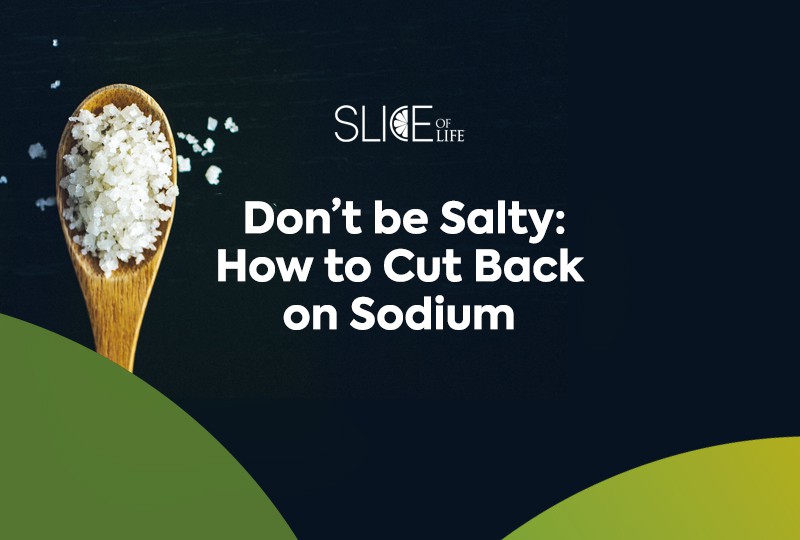Sodium (salt) is a delicious and sneaky mineral that is fine in moderation, but like many good things in life, too much of it can spell trouble for your health and nutrition. It can be really easy to consume excessive amounts of salt if you don’t pay attention to what you are eating, especially if you habitually buy processed foods or hit up the drive-thru.
Let’s take control with some healthy habits for reduced salt intake.
Putting the Halt on Salt
(Adapted from the CDC’s article, “How to Reduce Salt Intake”)
… At the Grocery Store
- As a general rule, it is always a good idea to shop for foods with a minimal amount of processing or additives. With regard to salt intake, search for foods in fresh, frozen or canned categories that do not come with added salt or sauce.
- Foods labeled as “low sodium, reduced sodium or “no salt added” are often going to be better options than their standard counterparts.
- You will probably be shocked the first time you really start to look at the salt content of some of your favorite products. Don’t be afraid to do some comparisons and find the lowest sodium options.
- Food labels can be your best friend in grocery shopping your way to better nutritional health, but they can also be deceptive if you are not careful. Zero in on what the “Recommended Serving Size” is listed at the top of the label, because sometimes companies will list an unrealistic serving size to try to mislead unobservant customers into thinking their food is healthier than it is. For example, they might say a serving size is 1/4 of a croissant, but come on, people don’t eat basically three bites of a croissant and then stop.
- Fresh meat is best, but check to see if saline or salt solution has been added. If so, it’s probably best to select something else. Avoid cured, salted, smoked and other processed meats.
- If more intentional dietary guidance is necessary, consult with a registered dietitian.
… In the Home
- Embrace alternative flavor enhancers when cooking, such as garlic, herbs, citrus, salt-free seasonings and spices. The spice aisle is your secret weapon, so use it!
- Don’t reach for the Kraft Mac or the ramen. Get pasta, rice, beans and meats in their most basic forms (dry and fresh) whenever possible. When you work from the simplest form of the ingredients, you have so much more control and knowledge over what you add to your dishes.
- To that end, be careful with pre-prepared sauces, mixes and instant products. It is better to make your own sauces and flavorings as much as possible, so you have a better idea of what is going onto your plate and into your body.
… Out and About
- You can ask for nutrition information before you order at a restaurant. Many places have lower calorie menus now, which tend to also be lower in sodium.
- You can request that no additional salt be added to your meal.
- Be mindful of portions and consider splitting a meal with a friend or family member.
- Fruits and vegetables are good potential side items. Just try to take note if salt is added.
Happy Eating!
For a deeper education into the wonderful world of nutrition, check out Life University’s many comprehensive nutrition programs, including our B.S. in Culinary Nutrition.
Slice of LIFE is an invitation to and extension of everything happening at Life University. Whether you are a current student, a potential freshman or a proud alumni, Slice of LIFE can help keep you connected to your academic community. Know of a compelling Life U story to be shared, such as a riveting project, innovative group or something similar? Let us know by emailing Marketing@life.edu.


Social Media